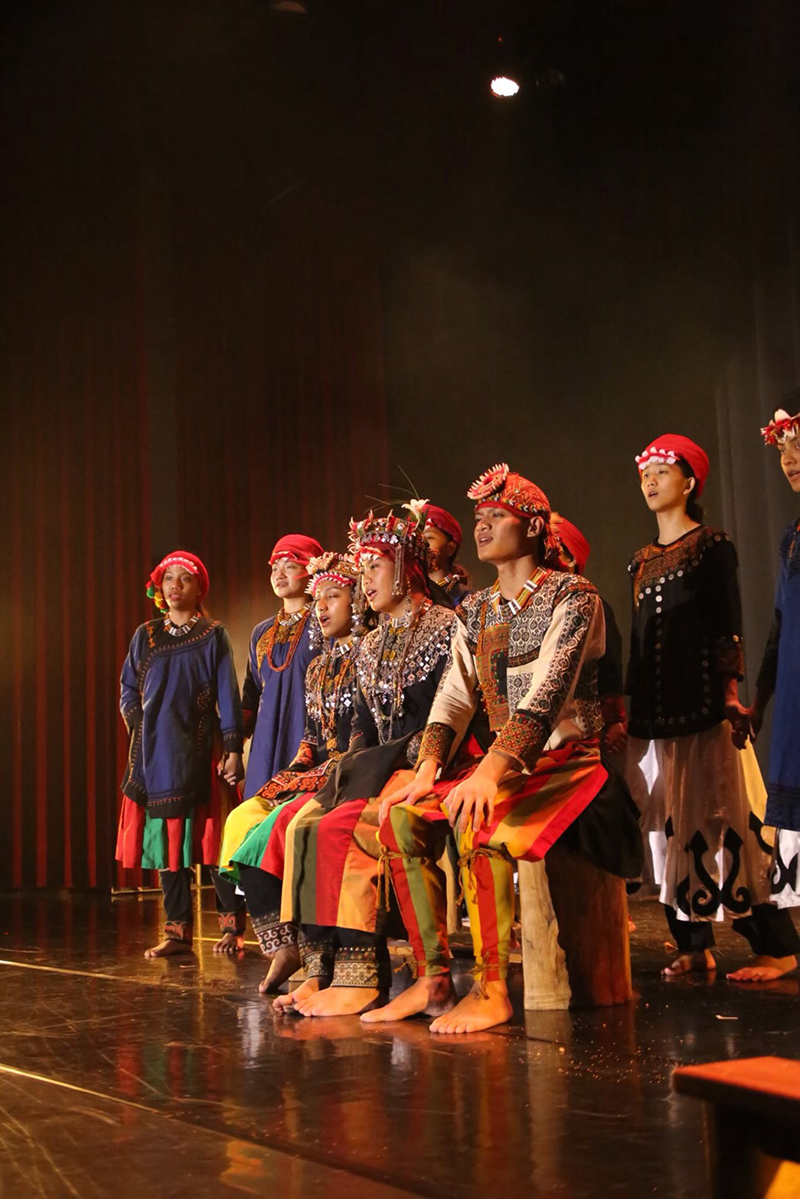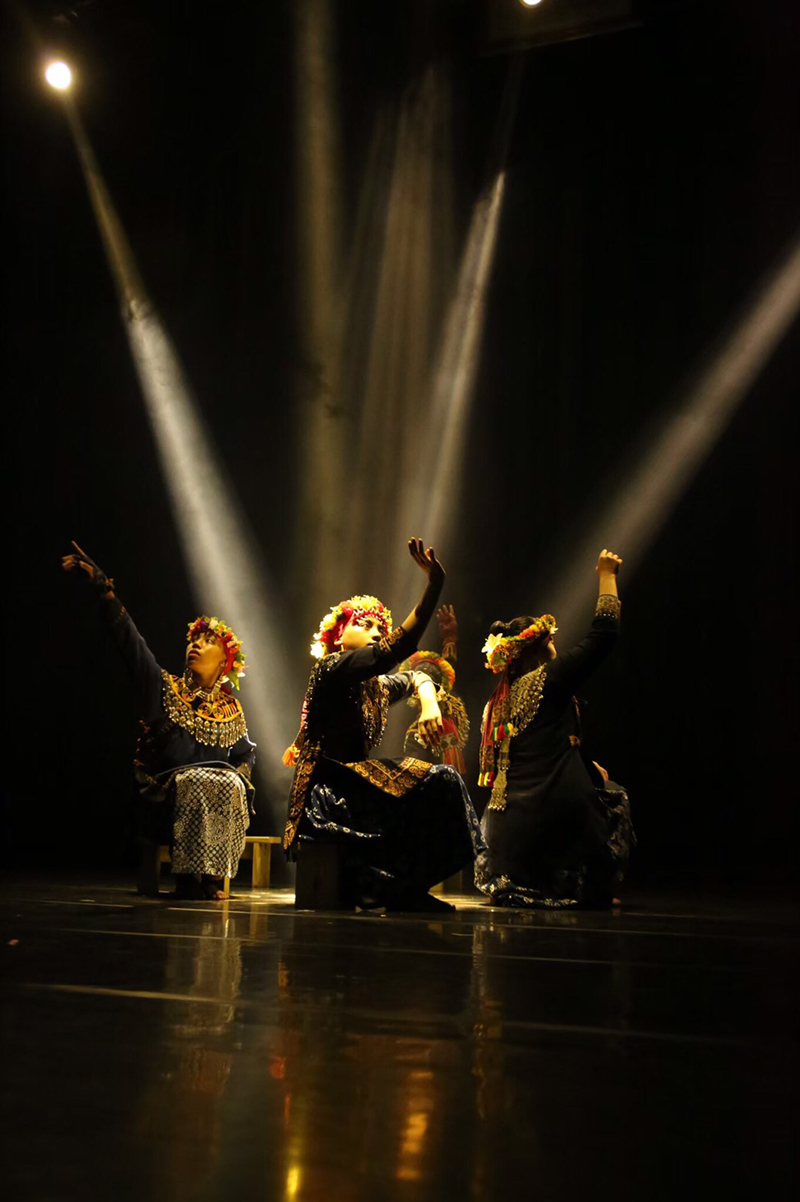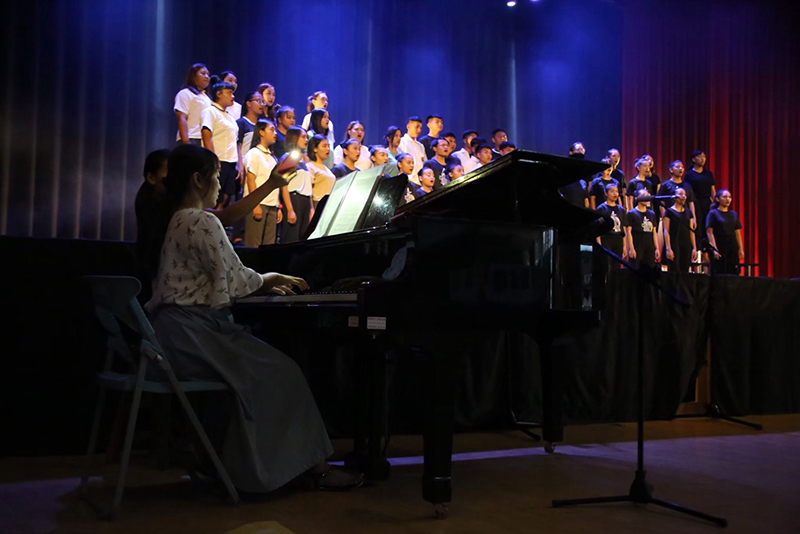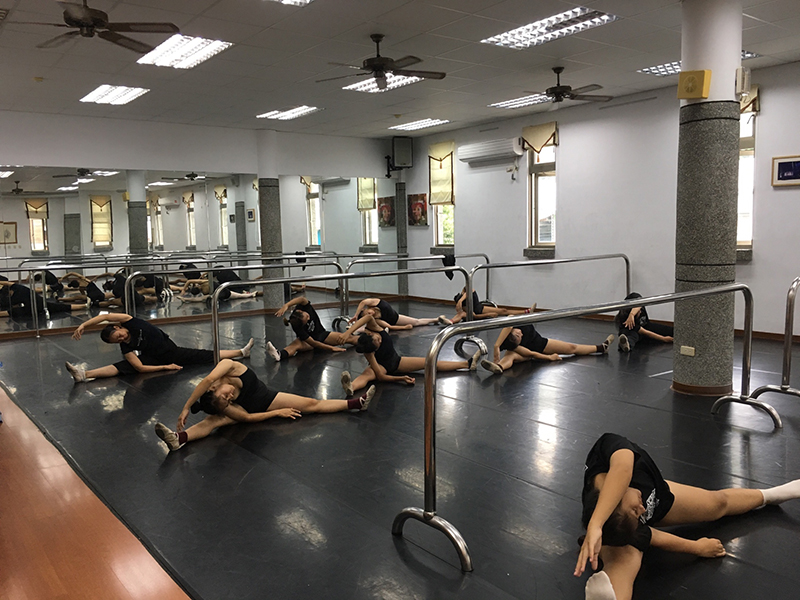Above:Performance of craftsmanship classes for the indigenous peoples in Laiyi Senior High School in the 2017 National Dancing Contest.
Through either modern dance that performs unlimited possibilities with bodies or traditional indigenous dance that shows respect to ancestral spirits with passion and vigor, students of Craftsmanship Class for the Indigenous Peoples in Laiyi Senior High School are able to demonstrate their best efforts. These students are repeated champions of national dance and choir contests. More amazingly, a group of dancers among them are both champion of indigenous and modern dance in the 2017 National Group Dance Contest.
From cultivation in daily life, the indigenous peoples demonstrate better art expression abilities. Talents can be observed in daily dancing, singing, and painting. When studying at school, most indigenous peoples, however, due to economic pressure, are not be inspired and guided systematically and their talents are unlikely to be developed professionally. Hence, in Laiyi Senior High School where 95% students are the indigenous peoples, Craftsmanship Class for the Indigenous Peoples was established in 2006 to teach students basic art training for presentation of diversity and creativity of indigenous cultures.
But unlike schools in urban area, it is quite difficult for Laiyi Senior High School to hire professional and passionate teachers. Liao Yi-Hsin, Dancing Director of Pingtung’s local professional Sandimen Tjimur Dance Theatre of Paiwan offered help to plan the dance course. Therefore, in the beginning of its establishment, Craftsmanship Class for the Indigenous Peoples in Laiyi Senior High School was known for its traditional and modern dance performance before the establishment of Fine Art Class.


Dance and singing, two key items, of craftsmanship class for the indigenous peoples in Laiyi Senior High School .
Supplementary Basic Course
for Accumulation of Cultural Strength
“Our significant feature is to cultivate the art talent with professional and authentic method that combines traditional arts of the indigenous peoples and innovation,” said Shi Yi-Ni, a teacher of Craftsmanship Class for the Indigenous Peoples. Most of her students are from Paiwan and Rukai communities with distinct characteristics different from those in cities. Cities have abundant resources and children are able to learn from very young age. When they join art classes, they have good foundation. But in Pingtung, 90% students in art class are interested in singing, dancing, and painting and have not received formal training. They may start late but the indigenous children are gifted and through educational training, quick progresses will be made.
Craftsmanship Class for the Indigenous Peoples in Laiyi Senior High School teaches basic courses as students learn in general class as well as subjects students chose when they entered the school for different artistic training. Students in Music and Dance Group, for example, need to learn indigenous dance, ballet, oriental dance, modern dance, and choir while those in Fine Arts Group is taught with weaving, leather carving, glass bead making, and ceramics as well as sketching, color application, and computer aided design.
“We hope that through teaching of academic and basic art courses and with their born talent, these students will be visible internationally,” further described by Shi Yi-Ni. Like outstanding pianists, they need to lay sound foundation of finger skills and music scale playing before they are known internationally.
These students also need to take indigenous language and cultural courses open for all students and the school arranges them to visit indigenous communities. Led by community vuvu, students are introduced to totems and essence of indigenous cultures via wood and leather carving works. At the same time, they learn gradually extinct ethnic cultures. Learning in indigenous communities is what students expect and teachers are excited. From the community elderly, students and teahers have the most valuable experience to contact the purest cultural essence.

Learning portrait painting and colors required for students in fine art course of craftsmanship classes for the indigenous peoples.
Trust Gradually Developed
between Non-indigenous and Indigenous Teachers and Students
Shi Yi-Ni frankly said, “A lot of people think it is easy to teach the indigenous peoples to sing since they are gifted. But it is because students are good at singing, conflict may easily occur during teaching.”
Singing is an important part in indigenous culture and students love singing in daily life. They are no stranger to singing. In vocal music and singing class, it is easy for students to resist learning by saying “no, vuvu does not sing that way, teacher!” The indigenous youth have been developed with singing and motion habits since they are little and they certainly resist when you want to change their concepts of application.
Responsibility of teachers in Craftsmanship Class do not only cultivate students with art and cultural specialties but also convey diverse knowledge and skills. Teachers need to introduce students to multiple expression methods of singing and dancing to slowly allow students to appreciate singing and dancing in different time. Once students are fascinated with these stories, they will be able to devote themselves to the professional field.
As non-indigenous people, Shi Yi-Ni shared her story about trust she won from her students after spending a long period of time. But after getting along with her students, now she always feels touched for pureness and passion of the indigenous peoples. When annual ritual festival comes, teachers always receive passionate invitations from students and their families. This experience is difficult for teachers in cities can encounter.

Performance of craftsmanship classes for the indigenous peoples in Laiyi Senior High School in the singing contest.
Art Dram
& Practical Barriers
Craftsmanship Class for the Indigenous Peoples in Laiyi Senior High School became well-known. After annual gradual performance, professional theaters often offer opportunities for students to join. Many graduates were admitted to universities of arts and became independent dancers with outstanding results. Some also study under public funding in universities of fine arts and would like to come back to teach local students.
“The indigenous children receive more family pressure than those in cities,” said Shi Yi-Ni. Only few students are given resources to continue their schooling. For the Craftsmanship Class, the biggest challenge lies in low acceptability for arts in our society. Many students have difficulties to find the balance between their dream and reality. They cannot continue their art learning simply because of family factor or economic consideration for making a living.
Lower birth rate in Taiwan also results in insufficient number of students for Craftsmanship Class for the Indigenous Peoples in Laiyi Senior High School but learning passion of the indigenous peoples is the drive for the School to go ahead. Teachers in Laiyi Senior High School are touched to see students active self-training outside class. Many teachers said, “As long as one student would like to learn, I will continue my teaching.” Probably the percentage for these students to become professionals is low, but when the seed of arts is planted, a flower will surely grow and eventually, arts will enrich their life. 

Professional teachers who teach dancing group of performance of craftsmanship classes for the indigenous peoples.




